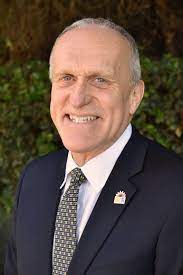Many recent media stories highlight the Inland Empire’s opportunity to become the world hub for clean energy development.
First, there was news that the Riverside City Council had approved the plan for Ohmio, maker of autonomous electric shuttles, to move its international headquarters to Riverside.
Next, a story published details about a study supported by UC Riverside showing that the Salton Sea contains enough lithium to make more than 375 million EV batteries. The study commissioned by the U.S. Department of Energy explained that we have enough lithium deposits to improve national energy security and export the remainder to other countries.
Then, a report broke about a leaked Amazon memo that defined the company’s public opinion strategy in the Inland Empire. The leaked Amazon plan criticized Assemblymember Eloise Reyes for advocating for “environmental legislation that would be detrimental to Amazon’s interests.”
Though some might believe the logistics industry makes it impossible for clean energy to succeed here, I completely disagree.
Instead, I believe this reinforces the opportunity and gives weight to the reasons why the Inland Empire must be the winner in the clean energy revolution.
One hundred and thirty years ago, Riverside was the wealthiest city per capita in the United States. Today, the metropolitan statistical area now known as the Inland Empire is the 12th most populous area in the U.S. (ahead of San Francisco) but ranks No. 302 in gross domestic product per capita.
Among the 50 most populous metros, the Inland Empire is the poorest.
Part of the area once known as the Citrus Belt, home to nearly a million trees, the IE has become a leader in poor air quality. The American Lung Association currently ranks San Bernadino and Riverside as the No. 1 and No. 2 most polluted places to live.
But this need not be our destiny.
UCR is not only one of the country’s leading research institutions but also a leader in the study of air pollution. UCR was the first to recognize the impact air pollution has on agriculture. Our Center for Environmental Research and Technology houses the world’s largest indoor environmental chamber for the study of ozone and secondary organic aerosol formation. And in 2021, the California Air Resources Board moved its headquarters to the campus. Interchange between the agency, UCR, and the community continues to grow.
In other words, we have the historical perspective and experience, commitment, laboratory facilities and top researchers studying these issues.
Then, there’s the logistics industry. Nearly 40% of the country’s consumer goods pass through the Inland Empire en route to their final destinations. As the logistics industry expands, the high volume of trucks has impacted pollution and roads. The incomparable volume and size means collaboration on clean logistics can have a greater impact in the Inland Empire than anywhere else. The companies, warehouses, and vehicles we need to test clean logistics technologies are already here. And retailers like Walmart have shown that small changes within a large footprint equates to a large impact.
If scientific resources and impact potential aren’t reason enough to become the capital of green energy, we can turn to climate and population. Last year’s record-breaking snowfalls and heat are prime examples of climate change as well as one reason our energy needs for heating and cooling continue to increase disproportionately when compared to other areas.
And to sustain a green business, we have the region’s workforce and talent. Many of those commuting for high-paying jobs on the coast could work closer to home producing high-value product in the IE. Building a green economy doesn’t just improve environmental sustainability. It improves financial sustainability too.
I expect that many places around the country would have reasons for why they should be the winner in green energy. Texans might assert that they already know energy. Detroit could claim its knowledge of motors.
But no place has the range of resources and reasons like the IE. The IE is best suited to be the home of clean energy.
Kim A. Wilcox is chancellor of UC Riverside. As the university’s chief executive, Chancellor Wilcox has led expansive growth in research, enrollment, graduation rates and physical development. He can be reached at chancellor@ucr.edu.

This article originally appeared on Palm Springs Desert Sun: Winning the clean energy revolution shows the Inland Empire means business
Signup bonus from




